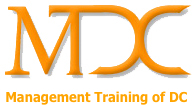Study Guide for MGT 323
Management Theory & Practice
The Catholic University of America
Study Guide for MGT 323, Management Theory and Practice
This course is a comprehensive overview of management theory, process, and behavior. Topics include: management across cultures; managing with ethics and social responsibility; fundamentals of organizing; organizational culture and design; leadership; motivation and communication; interpersonal skills; teamwork and group dynamics; goal setting; alternative work arrangements; power and politics; conflict and negotiation; managing change; and management development.
Emphasis is on the analysis and understanding of human behavior in organizations.
This course will help move students’ understanding of the work of the individual contributor-perfection-to the practice of management, which is working with imperfection, ambiguity, uncertainty and failure. The students will learn that they must control events or events will control them.
Describe the four functions of management.
Understand what managers at different organizational levels do.
Define the skills needed to be an effective manager.
Summarize the major challenges facing managers today.
Recognize how successful managers achieve competitive advantage.
Describe the origins of management practice and its early concepts and influences.
Summarize the five classical approaches to management.
Discuss the four contemporary approaches to management.
Identify modern contributors who have shaped management thought and practices.
Describe the five elements of an organization’s macro environment.
Explain the five components of an organization’s competitive environment.
Understand how managers stay on top of changes in an external environment.
Summarize how managers respond to changes in the external environment.
Discuss how organizational cultures can be leveraged to overcome challenges in the external environment.
Describe how different ethical perspectives guide managerial decision-making.
Identify the ethics-related issues and laws facing managers.
Explain how managers influence their ethics environment.
Outline the process for making ethical decisions.
Summarize the important issues surrounding corporate social responsibility.
Discuss the growing importance of managing the natural environment.
Summarize the basic steps in any planning process.
Discuss how strategic planning should be integrated with tactical and operational planning.
Describe the strategic management process and the importance of SWOT analysis in strategy formulation.
Analyze how companies can achieve competitive advantage through business strategy.
Identify the keys to effective strategy implementation.
Explain how to make effective decisions as a manager.
Give examples of some individual barriers that affect rational decision-making.
Summarize principles for group decision-making.
Describe why people become entrepreneurs and what it takes, personally
Summarize how to assess opportunities to start new businesses
Identify common causes of success and failure
Discuss common management challenges
Explain how to increase your chances of success, including good business planning
Describe how managers of large companies can foster entrepreneurship
Define the fundamental characteristics of organization structure
Distinguish between the four dimensions of an organization’s vertical structure
Give examples of four basic forms of horizontal structures of organizations
Describe important mechanisms used to coordinate work
Discuss how organizations can improve their agility through their strategy, commitment to customers, and use of technology
Discuss how companies use human resources management to gain competitive advantage
Give reasons why companies recruit both internally and externally for new hires
Understand various methods for selecting new employees and equal employment opportunity laws
Evaluate the importance of spending on training and development
Explain alternatives for who appraises an employee’s performance
Describe the fundamental aspects of a reward system
Summarize how unions and labor laws influence human resources management
Describe how changes in the U.S. workforce make diversity a critical organizational and managerial issue
Explain how diversity, if well managed, can give organizations a competitive edge
Identify challenges associated with managing a diverse workforce
Define monolithic, pluralistic and multicultural organizations
List steps managers and their organizations can take to cultivate diversity
Summarize the skills and knowledge about cultural differences needed to manage globally
Explain how a good vision helps you be a better leader
Discuss the similarities and differences between leading and managing
Identify sources of power in organizations
Know the three traditional approaches to understanding leadership
Understand the important contemporary perspectives on leadership
Identify types of opportunities to be a leader in an organization
Discuss how teams can contribute to an organization’s effectiveness
Distinguish the new team environment from that of traditional work groups
Summarize how groups become teams
Explain why groups sometimes fail
Describe how to build an effective team
List methods for managing a team’s relationship with other teams
Give examples of ways to manage conflict
Discuss important advantages of two-way communication
Identify communication problems to avoid
Describe when and how to use the various communication channels
Give examples of ways to become a better “sender” and “receiver” of information
Explain how to improve downward, upward and horizontal communication
Summarize how to work with the company grapevine
Describe the boundaryless organization and its advantages
Explain why companies develop control systems for employees
Summarize how to design a basic bureaucratic control system
Describe the purposes for using budgets as a control device
Recognize basic types of financial statements and financial ratios used as controls
List procedures for implementing effective control systems
Discuss ways in which market and clan control influence performance
Summarize how to assess technology needs
Identify the criteria on which to base technology decisions
Compare key ways of acquiring new technologies
Evaluate the elements of an innovative organization
Discuss what it takes to be world class
Describe how to manage change effectively
List tactics for creating a successful future

Recent Comments